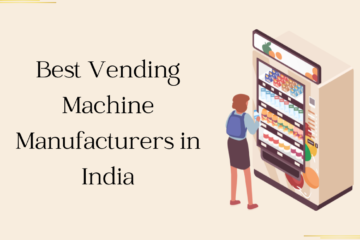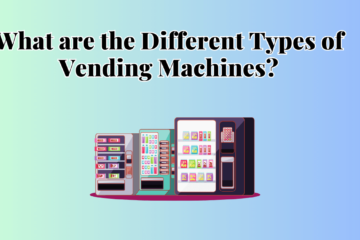a. Outer Shell or Enclosure
The outer shell of a vending machine serves as its protective covering, safeguarding the internal components from external elements and potential damage. Usually made of sturdy materials like metal or durable plastic, the enclosure provides the machine with its structure and aesthetic appeal. Some vending machines also incorporate transparent panels to showcase products, enticing customers with a glimpse of what’s inside.
b. Internal Framework
The internal framework is the backbone of the vending machine, supporting and organizing all the components in place. It is crucial to ensure the stability and durability of the machine, especially during transport and operation. Manufacturers often use high-grade metal alloys for the internal frame, as they offer a balance between strength and weight.
c. Product Storage and Dispensing Mechanism
One of the primary functions of a vending machine is to store products and dispense them to customers upon request. Depending on the type of product being sold, the storage mechanisms can vary widely. For instance, snack vending machines have spiral or conveyor systems, while beverage vending machines may use racks or canisters to hold the items securely.
d. Payment System
The payment system in a vending machine is what allows customers to make purchases. Traditional vending machines accept coins and bills, but with technological advancements, many machines now support cashless payment options like credit/debit cards, mobile payments, and even cryptocurrency in some cases.
e. Control Unit and Software
The control unit acts as the brain of the vending machine, coordinating all its functions seamlessly. It manages the product inventory, tracks sales, handles payment transactions, and communicates with external systems for updates and maintenance. Advanced vending machines also incorporate software that enables remote monitoring and real-time data analytics.
2. The Materials Used
a. Metal Alloys
Metal alloys such as steel and aluminum are commonly used in vending machine construction due to their strength and resilience. Steel provides a sturdy framework, ensuring the machine can withstand frequent usage and external pressures. Aluminum, on the other hand, offers a lightweight option for outer panels, making transportation and installation more manageable.
b. Stainless Steel
Stainless steel is a preferred material for vending machine surfaces that come in direct contact with consumers, such as product delivery chutes and button panels. It is highly resistant to corrosion, easy to clean, and maintains a hygienic surface for food and beverages.
c. Plastic and Polycarbonates
Plastic components are prevalent in vending machines, particularly for non-structural elements like button covers, product trays, and display panels. Polycarbonates, known for their high impact resistance, are often used for transparent windows and displays, providing both safety and visibility.
d. Glass
Some vending machines feature glass panels, adding an element of sophistication and allure to the products inside. Tempered glass is commonly used for its strength and safety features, ensuring that it does not shatter easily.
3. The Manufacturing Process
The manufacturing of vending machines involves a series of carefully orchestrated steps to achieve a functional and visually appealing end product.
a. Design and Prototyping
The process begins with conceptualizing the vending machine’s design, taking into consideration the type of products it will dispense, user interface, and overall aesthetics. Once the design is finalized, a prototype is created to test its functionality and make necessary improvements.
b. Material Fabrication
The selected materials, such as metal sheets and plastic molds, undergo fabrication processes to transform them into the required shapes and sizes. Cutting, bending, welding, and molding are common techniques used during this stage.
c. Assembly and Quality Control
With the fabricated components ready, the vending machine is assembled piece by piece, integrating the internal systems and securing them within the enclosure. Rigorous quality control checks are performed throughout the assembly process to ensure that the machine meets safety standards and functions as intended.
4. Sustainability and Eco-Friendly Vending Machines
As environmental consciousness grows, vending machine manufacturers are making efforts to reduce their carbon footprint and promote sustainability.
a. Energy Efficiency
Modern vending machines are designed to be energy-efficient, utilizing advanced technologies like LED lighting and power-saving modes. Some machines also incorporate solar panels to harness renewable energy.
b. Recycling Initiatives
Manufacturers are increasingly using recycled materials in the production of vending machines, contributing to the reduction of waste and resource consumption.
c. Green Materials
Exploring alternative materials with eco-friendly attributes is another trend in vending machine manufacturing. Biodegradable plastics and sustainable composites are being tested for various components.
5. Common Types of Vending Machines
a. Snack Vending Machines
Snack vending machines offer a selection of quick bites, candies, and packaged snacks, providing a convenient solution for on-the-go cravings.
b. Beverage Vending Machines
Beverage vending machines dispense a variety of drinks, including soda, water, juices, and energy beverages, catering to thirsty customers in various locations.
c. Medicine Vending Machines
Found in healthcare facilities and public places, medicine vending machines offer over-the-counter medications and health supplies for emergencies.
d. Automated Retail Kiosks
Automated retail kiosks go beyond snacks and beverages, providing a wide array of products, from electronics to personal care items, in shopping centers and airports.
6. Innovations in Vending Machine Technology
a. Touchscreen Interfaces
Many modern vending machines are equipped with user-friendly touchscreen interfaces that make product selection and payment more intuitive.
b. Cashless Payment Options
Vending machines now accept digital payments, allowing customers to use their cards, smartphones, or wearable devices for a seamless transaction.
c. Remote Monitoring and Maintenance
Advanced vending machines are equipped with sensors and IoT technology, enabling operators to monitor inventory levels, machine performance, and conduct remote maintenance.
7.Vending Machines in Different Industries
a. Hospitality Sector
Vending machines in hotels and resorts offer guests a quick and accessible way to purchase snacks, beverages, and essential amenities.
b. Transportation Hubs
Airports, train stations, and bus terminals often feature vending machines, catering to travelers’ needs during their journeys.
c. Educational Institutions
Vending machines in schools and universities provide students and staff with convenient options for meals and snacks between classes.
d. Corporate Offices
In office buildings, vending machines offer employees a quick break and access to refreshments without leaving the premises.
8. Challenges in Vending Machine Design
a. User Interface and Accessibility
Creating an intuitive and user-friendly interface is crucial to attract and retain customers, especially in high-traffic areas.
b. Inventory Management
Efficient inventory management is essential to ensure that the vending machine is always well-stocked with popular products.
c. Security and Vandalism
Vandalism and theft can pose challenges, necessitating robust security measures to safeguard both the machine and its contents.
9. The Future of Vending Machines
a. AI and Personalization
Artificial intelligence will enable vending machines to analyze customer preferences and offer personalized product recommendations.
b. Biometric Recognition
Biometric technology may be incorporated for secure and touchless transactions, enhancing user convenience and security.
c. Diverse Product Offerings
The future of vending machines may witness an expansion in product categories, ranging from freshly prepared meals to high-tech gadgets.
Conclusion
Vending machines have come a long way since their inception, evolving into sophisticated systems that cater to various consumer needs. From the materials used in their construction to the innovative technologies they employ, these machines continue to shape the way we access products conveniently. As environmental concerns grow, the industry is also making strides towards sustainability, ensuring that the future of vending machines aligns with eco-friendly practices.
FAQs
- Q: Are vending machines only used for snacks and beverages?
- A: No, vending machines can dispense a wide range of products, including electronics, personal care items, and even prescription medications.
- Q: Do vending machines have security features to prevent theft?
- A: Yes, modern vending machines incorporate security measures like surveillance cameras, locking mechanisms, and anti-vandalism features.
- Q: Can vending machines accept cryptocurrency as payment?
- A: Some vending machines have adopted cryptocurrency payment options to cater to tech-savvy customers.
- Q: How do vending machines ensure product freshness?
- A: Vending machines with perishable items often feature temperature control systems to maintain product freshness.
- Q: Can vending machines be remotely operated and monitored?
- A: Yes, many vending machines are equipped with IoT technology for remote monitoring and maintenance by operators.




